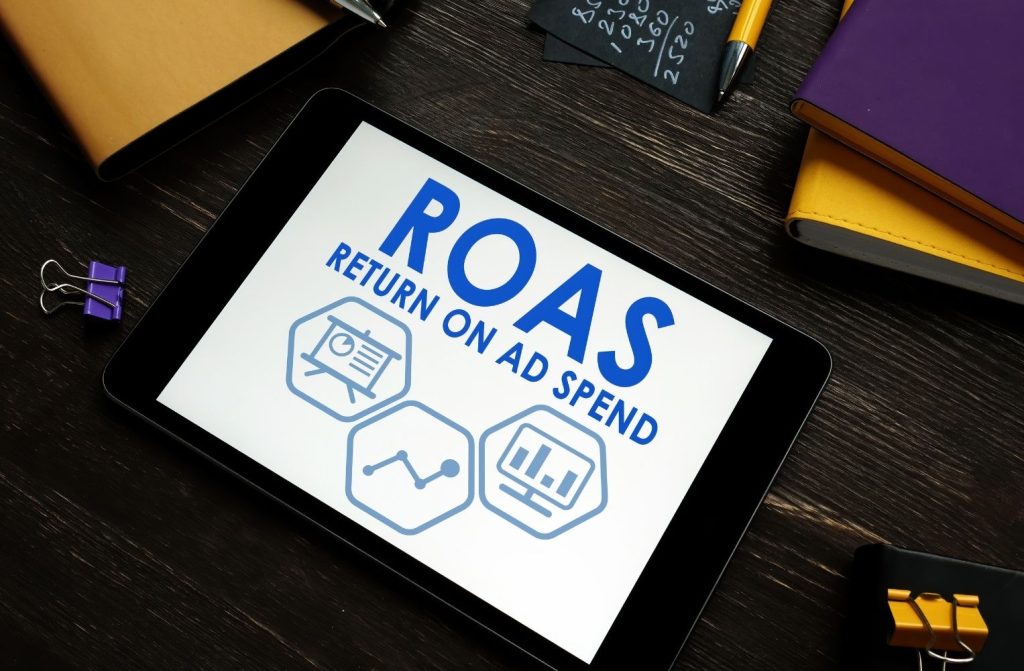Today, more than ever, it’s vital not only to invest in digital marketing but to ensure that every dollar invested translates into real, measurable revenue. This is where attribution and data management come into play. Calculating a hotel’s ROAS (Return on Ad Spend) isn’t as simple as adding revenue and subtracting expenses; it’s about understanding the complex journey a guest takes from the first touchpoint to the final booking. A well-calculated ROAS, based on precise data and a smart attribution model, is the difference between successful marketing and one that drains your budget without a clear return.
The Challenge of Attribution in Hotel Marketing
Imagine a traveler looking for a hotel. First, they see an ad for your hotel on Facebook. Then, they search on Google and click on your Google Ads listing. After that, they visit your Google My Business profile, read some reviews, and finally, return to your website and book directly. Which channel do you attribute credit to for that booking? To Facebook (first touch), Google Ads (intermediate touch), or the direct booking (last touch)?
This is the essence of attribution. It’s the process of assigning credit to the different marketing touchpoints a customer encounters on their path to conversion. In hotel marketing, where the purchase cycle can be long and touchpoints varied (ads, metasearch engines, social media, SEO, email, direct visits), choosing the right attribution model is fundamental to understanding the true impact of your campaigns and calculating a ROAS that reflects real revenue.
Attribution Models: Which Is Best for Your Hotel?
Several attribution models exist, and each tells a different story about your channels’ performance. Understanding them is the first step to ensuring your ROAS is accurate.
1. Last-Click Attribution
- How it works: Assigns 100% of the credit to the last interaction the user had before converting.
- Pros: It’s the simplest model to implement and understand. Google Ads and Meta use it by default in many of their reports.
- Cons: Completely ignores all previous touchpoints that may have influenced the customer’s decision. For example, if a guest saw your ad on Instagram and then searched for your hotel directly on Google, credit would go to “Direct” or search, without acknowledging Instagram’s role in the initial awareness phase. This can lead to undervaluing top-of-funnel acquisition channels and overvaluing closing channels.
- Recommendation for hotels: While easy to use, we don’t recommend it as the sole source of truth for your ROAS, as it can distort the overall picture. You might stop investing in channels that truly initiate interest from your future guests.
2. First-Click Attribution
- How it works: Assigns 100% of the credit to the first touchpoint the user had with your brand.
- Pros: Ideal for understanding which channels are most effective for initial acquisition and brand awareness generation.
- Cons: Ignores all subsequent interactions that led to the conversion.
- Recommendation for hotels: Useful for evaluating the effectiveness of awareness or branding campaigns, but insufficient for a complete ROAS calculation, as it doesn’t consider the influence of channels that nurture the customer throughout the funnel.
3. Linear Attribution
- How it works: Distributes credit equally among all touchpoints in the customer journey.
- Pros: Gives credit to all involved channels, acknowledging their contribution.
- Cons: Assumes every touchpoint has the same importance, which is rarely true.
- Recommendation for hotels: Better than last- or first-click for a more balanced view, but it can still underestimate the importance of key touchpoints.
4. Time Decay Attribution
- How it works: Assigns more credit to touchpoints that occurred closer to the time of conversion. Credit exponentially decreases the further away the touchpoint is from the conversion.
- Pros: Reflects the idea that more recent interactions are likely the most influential.
- Cons: Can still undervalue the importance of initial touchpoints in demand creation.
- Recommendation for hotels: Useful for shorter sales cycles or when the customer journey is relatively quick.
5. Position-Based Attribution
- How it works: Assigns predefined credit to the first and last touchpoints (commonly 40% to each) and distributes the remaining credit (20%) among intermediate touchpoints.
- Pros: Gives importance to both the beginning (awareness creation) and the end (sales closing) of the funnel.
- Cons: The percentage distribution can be arbitrary and may not always reflect actual value.
- Recommendation for hotels: A very popular and balanced option, as it values both acquisition and closing.
6. Data-Driven Attribution (DDA)
- How it works: This is the most advanced model. It uses machine learning algorithms to analyze all data in your account (conversion and non-conversion paths) and dynamically assigns credit to each touchpoint based on its actual contribution to the conversion.
- Pros: It’s the most accurate, as it adapts to your specific data and gives you the most realistic view of your channels’ performance. It identifies which channels are truly influential in the customer journey.
- Cons: Requires a significant volume of conversion data to function effectively and is not accessible on all platforms or account levels.
- Recommendation for hotels: This is the ideal model and the one you should strive to use in Google Ads and Google Analytics 4 (GA4). It provides you with the most precise ROAS possible and helps you make investment decisions based on the real value of each channel.
How to Ensure Your ROAS Reflects Real Revenue: A Data-Driven Approach
For your hotel’s ROAS to be a reliable metric, you need a solid data infrastructure and an attribution-oriented mindset.
1. Implement Robust Conversion Tracking
- Google Analytics 4 (GA4): This is the foundation of everything. Make sure GA4 is correctly configured on your website and booking engine. Set up key events as conversions:
- page_view (for important pages like rooms, offers).
- view_item_list (room/date search).
- add_to_cart (booking process initiation).
- begin_checkout (payment initiation).
- purchase (completed booking, including booking value and currency). It’s crucial that the booking value is passed dynamically.
- page_view (for important pages like rooms, offers).
- Google Ads: Link your Google Ads account with GA4 and import conversions. Ensure that conversions imported from GA4 are “purchase” (buy/book) events with dynamic value. If you use direct Google Ads tracking, verify that the value is being passed correctly.
- Meta Pixel (Facebook & Instagram): Install the Meta Pixel and configure standard events (ViewContent, AddToCart, InitiateCheckout, Purchase) and customize the Purchase event to pass the booking value. This will allow you to optimize your Meta campaigns for value and ROAS.
- Call Tracking: If phone calls are a significant source of bookings, implement call tracking (e.g., with dynamic call forwarding numbers on your website or in your ads).
2. Data Consolidation and Visualization
- Data Sources: Centralize data from Google Ads, Meta Ads, Google Analytics, your booking engine, CRM, and any other channels.
- Reporting Tools: Use tools like Looker Studio (formerly Google Data Studio) to create custom dashboards that integrate data from all your sources. This will allow you to visualize ROAS from different attribution perspectives and compare your channels’ performance.
- Property Management Systems (PMS) and CRM: Integrate your marketing data with your PMS and CRM whenever possible. Knowing the Customer Lifetime Value (CLTV) and whether a booking came from a new or returning customer will give you a more complete view of long-term profitability.
3. Adopt a Data-Driven Attribution (DDA) Model
- In Google Ads and GA4: If you meet the data volume requirements, set your default attribution model to “Data-Driven.” This is fundamental. It allows the platforms to optimize your bids and campaigns based on each interaction’s actual contribution.
- Multi-Channel Analysis in GA4: Explore the “Conversion paths” and “Assisted conversion paths” reports in GA4. They will show you the sequences of channels that lead to bookings and which channels contribute without being the last click.
4. Understand Customer Lifetime Value (LTV)
A high ROAS on a single booking is good, but a repeat customer who generates multiple bookings over time is gold. Good data analysis not only measures the ROAS of the first booking but also helps you understand the Customer Lifetime Value (CLTV).
If a channel like Meta Ads doesn’t have as high a ROAS on the first conversion but is excellent at acquiring customers who then become repeat customers through other channels or direct bookings, its true value is much higher. Adjust your investments not just by immediate ROAS but by long-term value.
5. Regular Audits and Continuous Optimization
- Review your tracking settings: Pixels and tags can get misconfigured. Conduct regular audits to ensure everything is working correctly.
- Analyze performance by attribution model: Don’t stick to just one model. Compare your channels’ ROAS using different attribution models to gain a more complete view.
- Adjust your investments: Once you have reliable data and understand how your channels contribute, adjust your budget. If a channel has a low last-click ROAS but consistently appears at the beginning of successful conversion paths (according to your DDA model), consider increasing investment in it to foster brand awareness.
The Impact of Accurate ROAS on Your Hotel Strategy
Having a ROAS that reflects real revenue has a transformative impact on your hotel:
- Informed Investment Decisions: You’ll know exactly where to invest your marketing dollars for maximum return.
- Campaign Optimization: You’ll be able to fine-tune your campaigns in Google Ads, Meta, and other channels, focusing on the keywords, audiences, and creatives that truly drive profitable bookings.
- Reduced OTA Dependence: By understanding the real value of your direct channels, you can invest more in them and reduce commissions paid to third parties.
- Improved Overall Profitability: A higher ROAS means more revenue for every advertising investment, directly impacting your bottom line.
- Holistic View of the Customer Journey: You’ll understand how your guests interact with your brand at different touchpoints, allowing you to optimize the entire customer experience.
Don’t just see ROAS as a number. See it as a reflection of the health of your digital marketing strategy. By mastering attribution and data management, you’ll not only ensure your ROAS reflects real revenue but also build a direct booking machine for your hotel.
Contact us at Digisap, and let’s design together an SEO and digital marketing strategy so your hotel is the first choice, and guests book with you, not the competition.
Click here to schedule your free consultation and take your hotel to the next level





